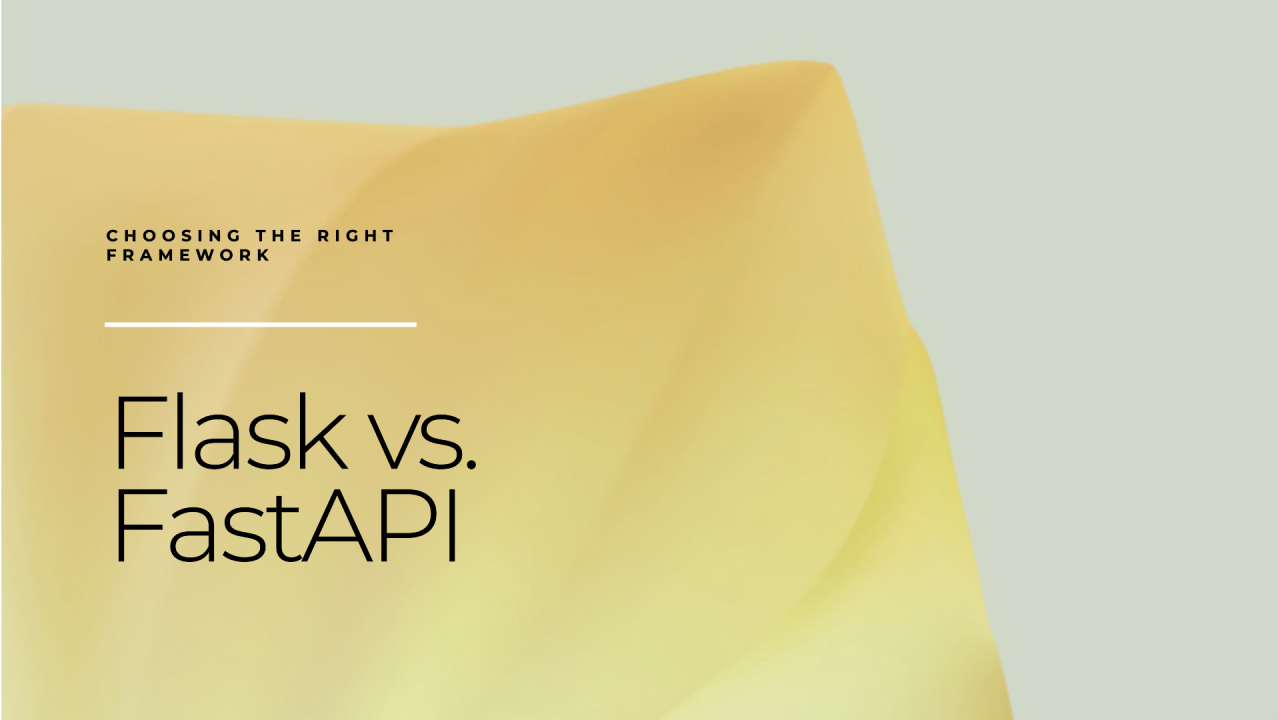Flask vs. FastAPI, Which Should You Choose?
🚀 Flask vs. FastAPI: Which Should You Choose? 🤔
Imagine you’re building an API, and you need it to be fast, reliable, and scalable. You’ve got two great options on your plate: Flask—the tried-and-true, minimalist framework, and FastAPI—the rising star that’s been blowing developers away with its speed and features. So, which one do you choose? It’s difficult, because both are fantastic frameworks, each with its own strengths. So, how do you pick between the two? Here’s where I’ve landed after working with both.
Flask: The Reliable Old Friend 🛠️
Flask has been a trusted tool in my developer toolkit for years. It’s perfect for quick, simple projects where you want full control. I’ve always appreciated its flexibility—Flask gives you the skeleton, and you build the rest exactly how you want. For example, in past projects, I’ve enjoyed using Flask for creating straightforward APIs with minimal overhead. It’s a lightweight framework that allows you to choose your libraries, giving you the freedom to integrate whatever tools or systems you prefer.
But here’s the thing: as your project grows, so does the manual work involved. Need documentation? You have to set it up yourself. Want async support? That requires extra work too. Flask is amazing when you want to start fast, but the more features you need, the more effort it takes to implement them.
FastAPI: The New Powerhouse ⚡
Now, FastAPI… this is where the magic happens. After spending some time with it, I can confidently say that FastAPI has changed how I think about building APIs. The speed, efficiency, and out-of-the-box features are unmatched.
What really stood out to me was the automatic interactive documentation—built right in, without any extra configuration. That’s powered by OpenAPI and Swagger, and it’s a life-saver, especially when working with teams that need quick access to test endpoints. Imagine having a clear, beautifully documented API from day one. That’s what FastAPI gives you.
Another key feature? Asynchronous programming. FastAPI is built with async support, meaning it’s incredibly fast at handling multiple requests concurrently. For large-scale applications that need to handle thousands of requests, this is a game-changer.
Flask vs. FastAPI: Which One Wins? 🏆
- Flexibility: Both frameworks offer flexibility, but Flask gives you more control over every aspect, while FastAPI does a lot of the heavy lifting for you.
- Speed: FastAPI is built with performance in mind. Thanks to its async support, it significantly outperforms Flask for high-demand APIs.
- Ease of Use: Flask is simpler when you’re getting started, especially if you’re new to web development. But FastAPI makes your life easier by providing features like validation, async support, and interactive documentation out of the box.
- Community & Ecosystem: Flask has a larger, more mature ecosystem with lots of extensions. FastAPI, on the other hand, is rapidly growing and already offers great third-party integrations for authentication, databases, and more.
Things to Keep in Mind with FastAPI 💡
- Async by Default: FastAPI’s async feature is incredible, but if you’re not familiar with async programming, it can take some getting used to.
- Type Hints Matter: FastAPI relies heavily on Python’s type hints, which can be a bit unfamiliar at first. However, once you get the hang of it, it actually makes your code cleaner and less error-prone.
- Growing Ecosystem: While FastAPI is still newer than Flask, its ecosystem is expanding quickly. It might not have the same number of extensions yet, but it’s catching up fast.
Why I Love FastAPI ❤️
Honestly, FastAPI has made my life as a developer easier. The performance is outstanding, the automatic documentation is a dream, and it helps me build APIs faster than ever before. I’m particularly impressed with how it handles validation and error reporting—so clean, so efficient. Every time I spin up a new API project, FastAPI feels like the future of Python web frameworks.
A big shoutout to Sebastián Ramírez, the mastermind behind FastAPI. Your work has transformed the way many of us build APIs, and I absolutely love using it! 🙌
What’s Next?
In my experience, both frameworks have their place. Flask is perfect when you need something lightweight and flexible, while FastAPI is a powerhouse for high-performance APIs with tons of out-of-the-box features.
Stay tuned for more insights on Flask vs. FastAPI, and let’s chat in the comments! What’s your experience with these frameworks? 🚀
